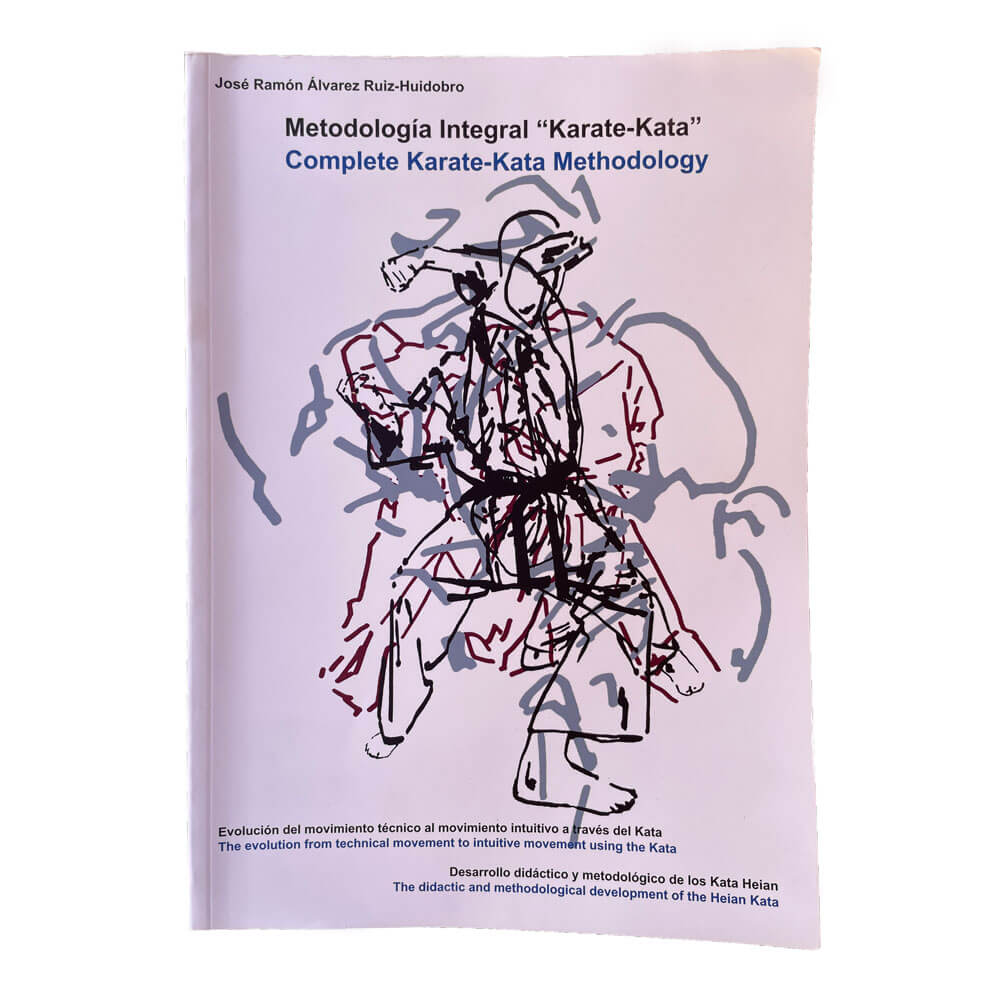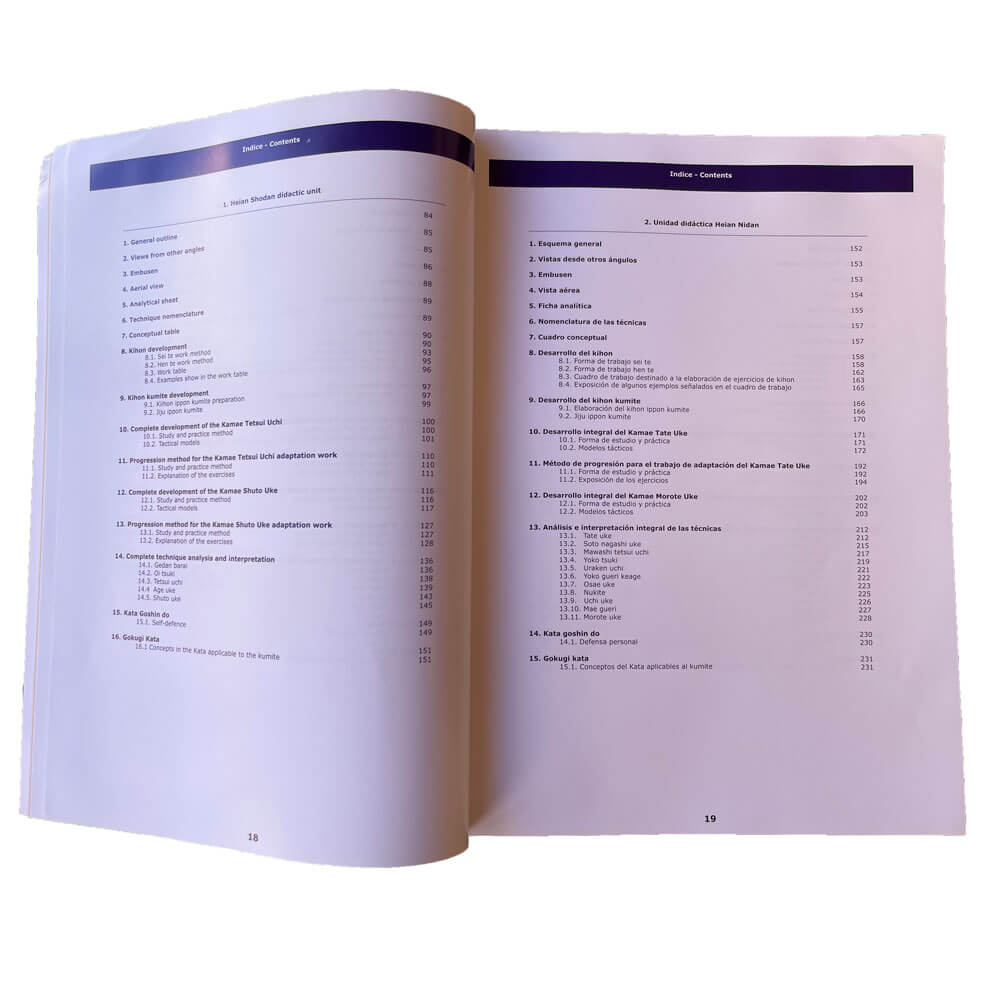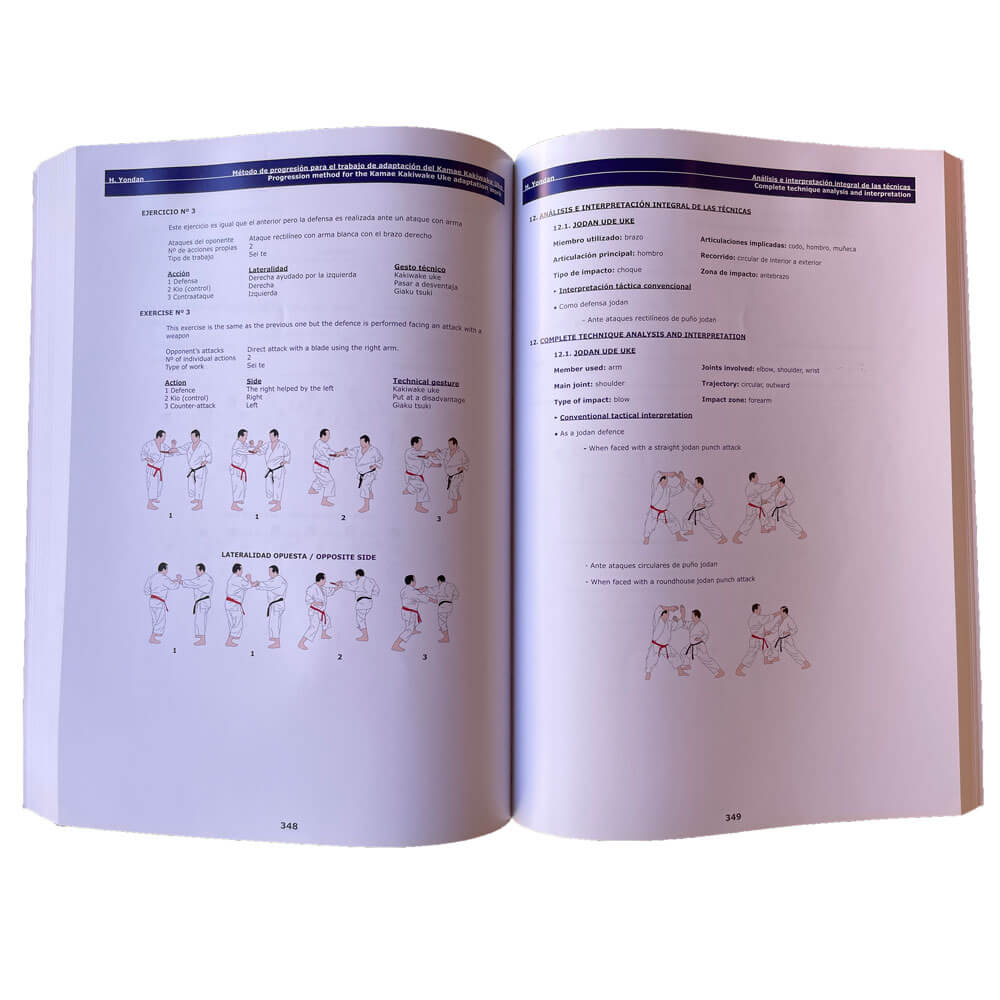Description
The aim of this text is to offer a developed, ordered, progressive and reasoned method in order to manage with gre• ater versatility and effectiveness the gestural selection of techniques possessed, to a greater or lesser extent, by the kara- teka. This is because we believe that although the majority of karatekas practise Kata, there exists a great difficulty in applying these techniques in a different context to that which is practised in work such as kihon kunite or bunkai. In other words, when we go from agreed work, in which there is coloaboration, to unagreed work, in which the attacker does not co- laborate.
Contributing a new viewpoint, this study starts with the simplest technical gesture and concludes with adaptation, and then intuitive work. The pupil is able to improvise defensive as well as counter-attack responses when faced with diffe- rent attacks and situations created by the attacker, who is not limited to the techniques normally used in the kumite.
This publication, which contains more than 4,000 diagrams, is presented as a practical and innovative manual of great interest for teachers as well as students. It includes a text, in English as well as Spanish which considers Karate lite- rature. Its content has been put together with rigor and depth over twelve years of continuos work and investigation.
We are fully confident that it will be a reference work and will contribute to further improve, if it is possible, the dif- fusion and understanding of Karate do.
















